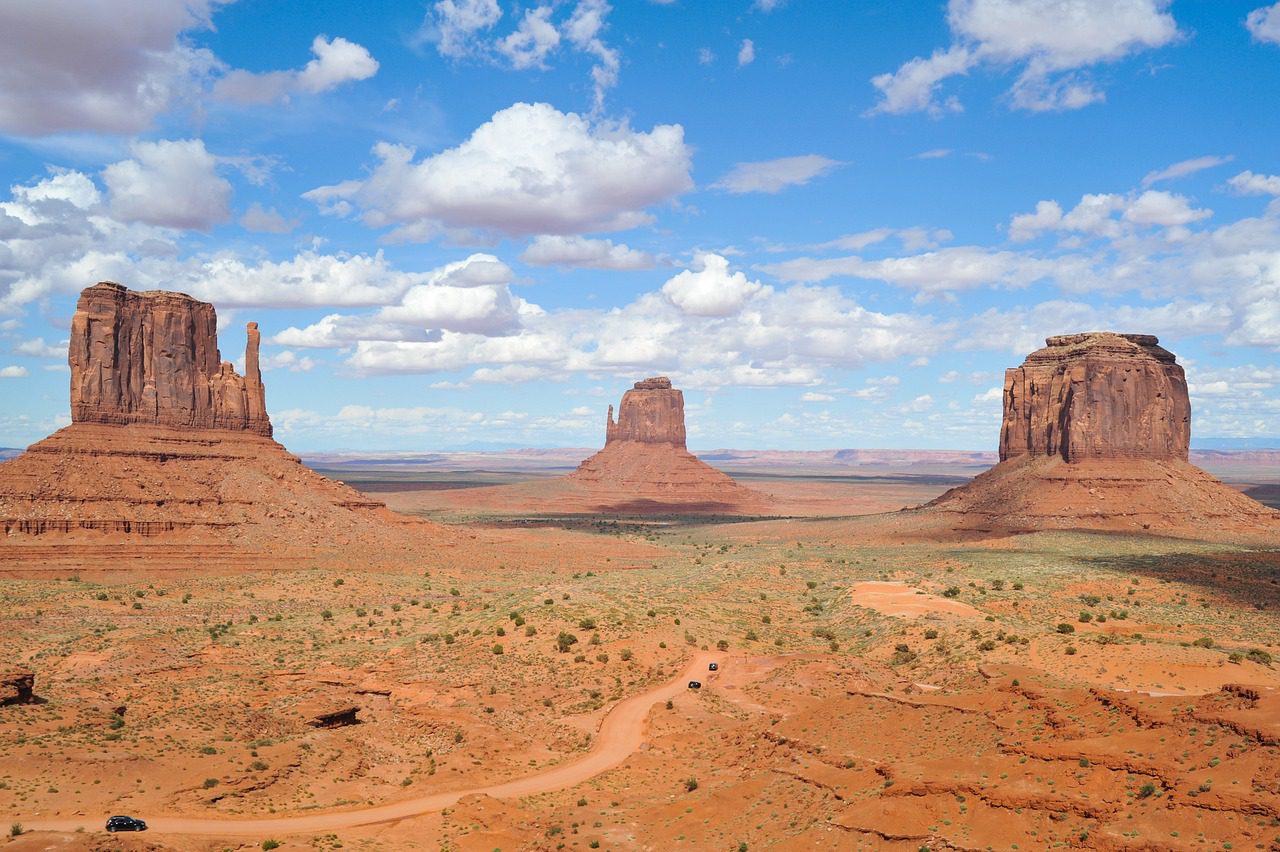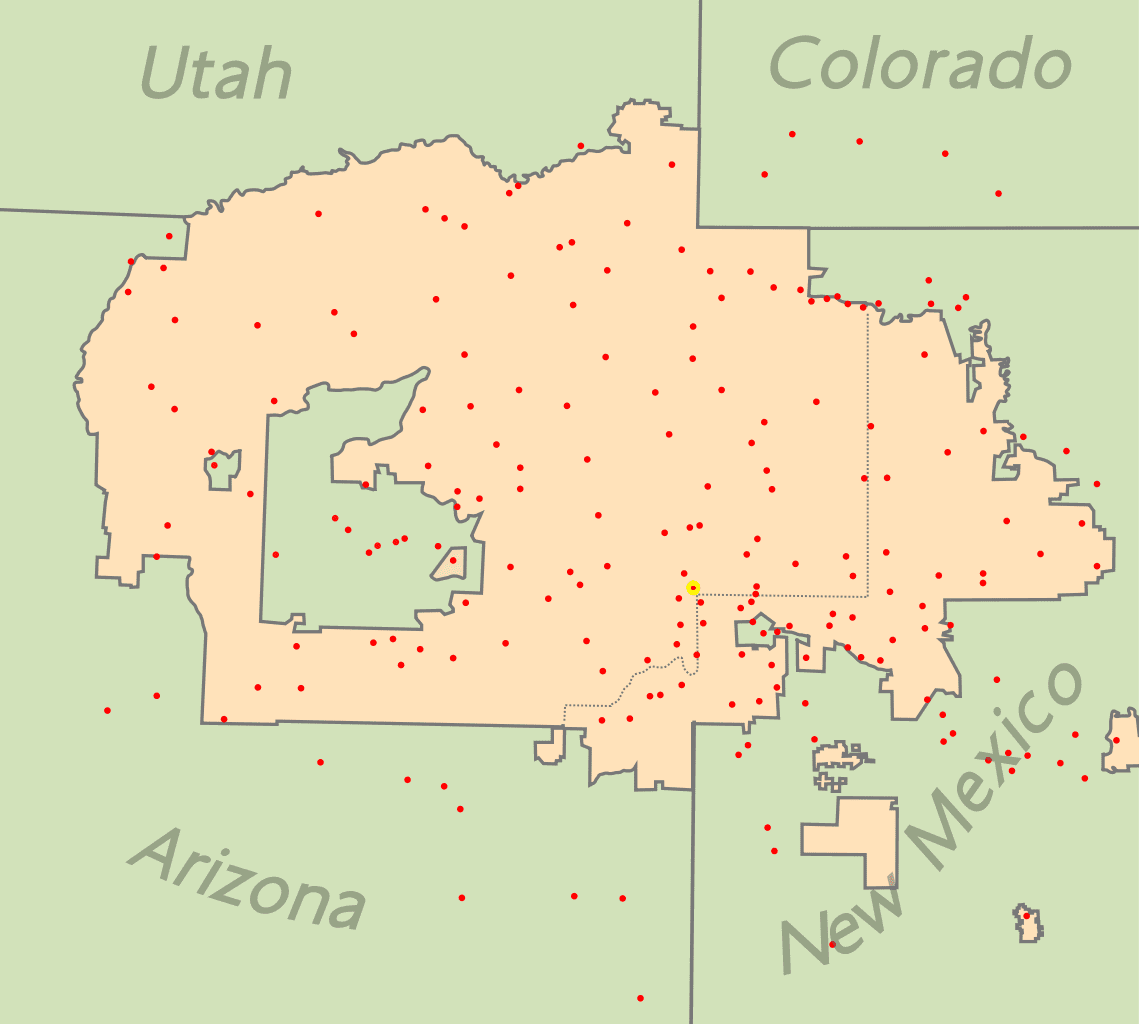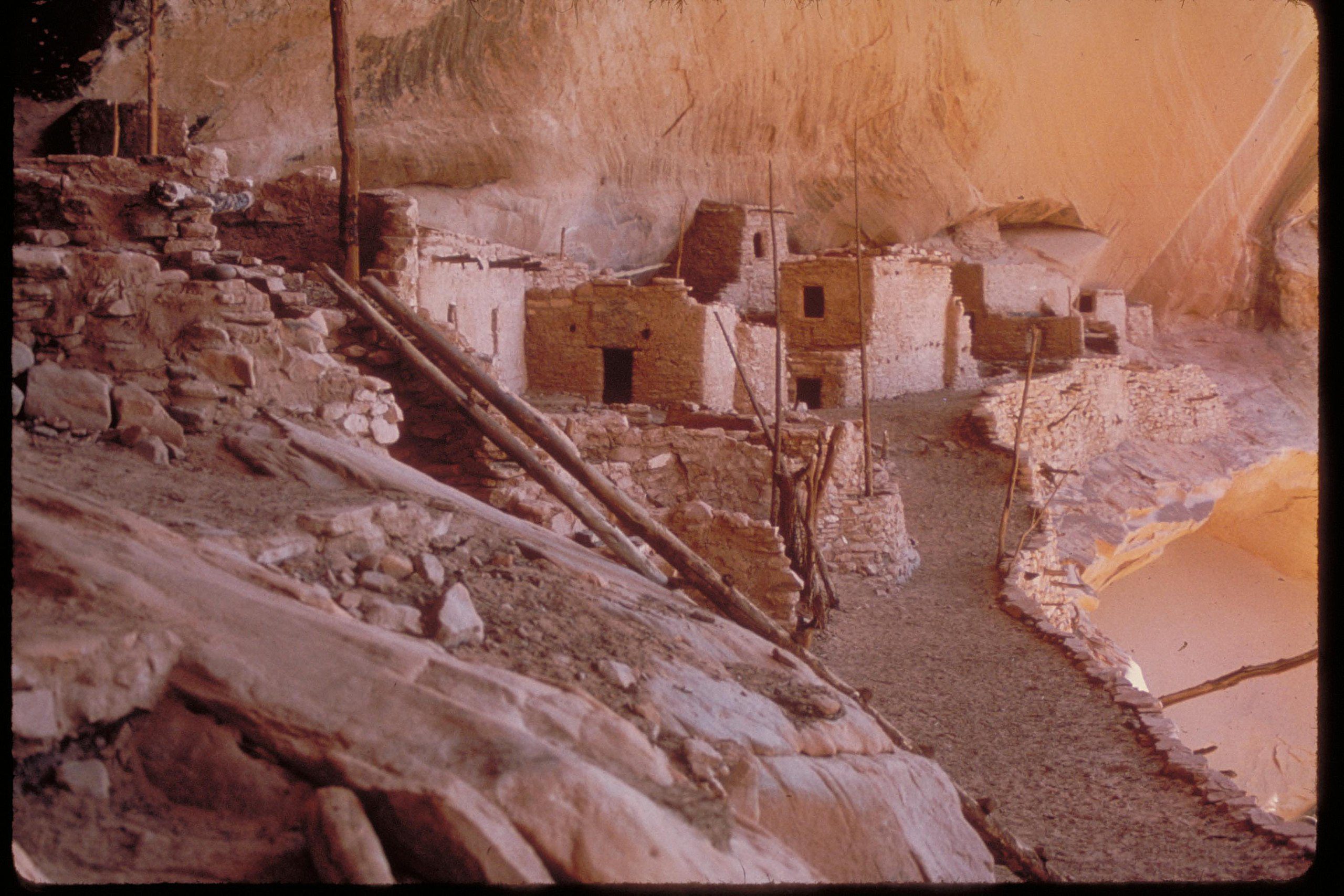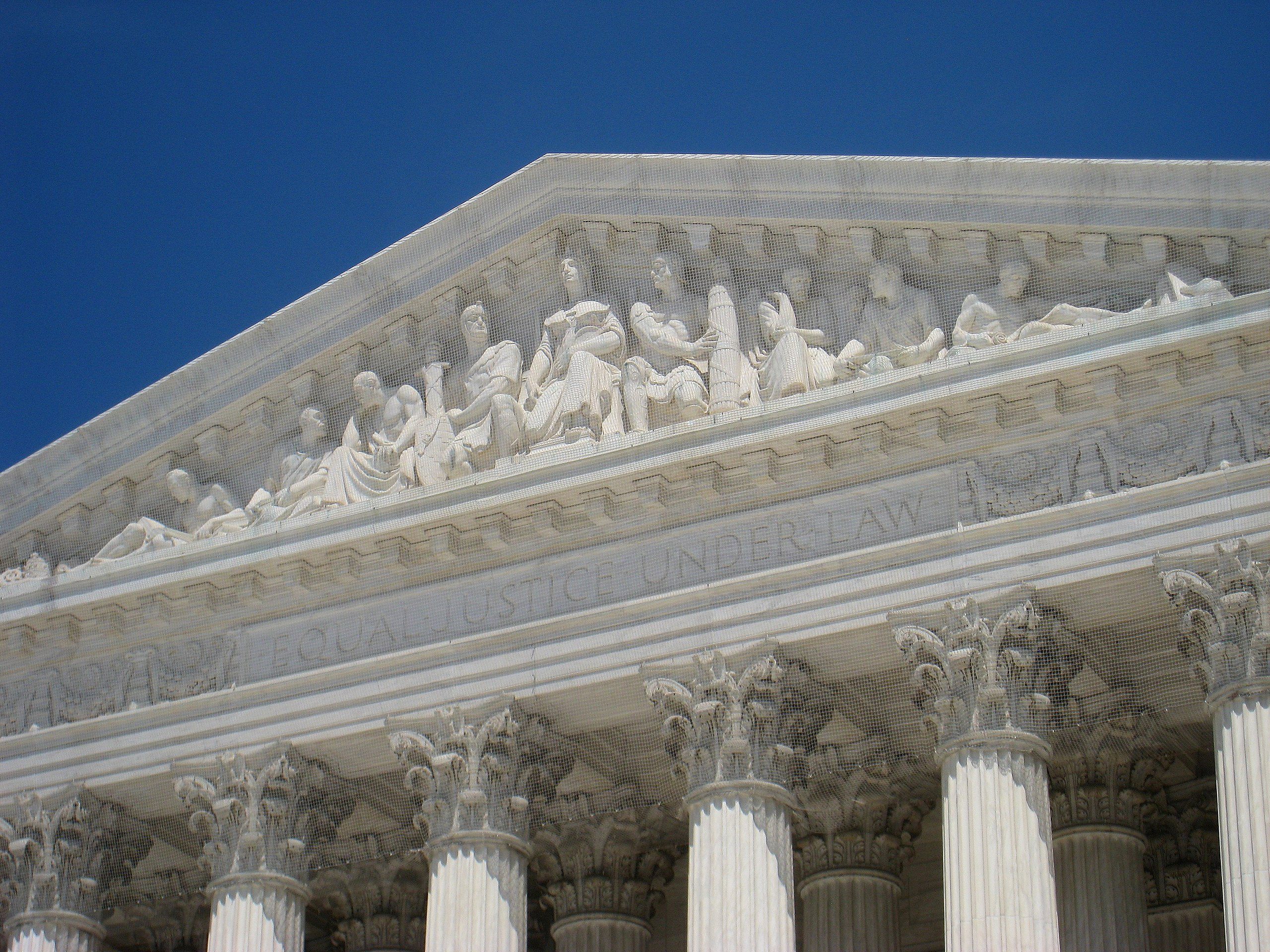June 23, 2023 — The U.S. Supreme Court delivered its opinion yesterday in the case Arizona v. Navajo Nation (PDF link to Opinion) , addressing whether the United States must take steps to secure water for the Navajo Nation under a treaty from 1868. In its 5-4 decision, the Court found that the United States government is not obligated to secure water for the tribe. The Court overturned a previous ruling by the U.S. Court of Appeals for the 9th Circuit, stating that the 1868 Treaty of Bosque Redondo
, addressing whether the United States must take steps to secure water for the Navajo Nation under a treaty from 1868. In its 5-4 decision, the Court found that the United States government is not obligated to secure water for the tribe. The Court overturned a previous ruling by the U.S. Court of Appeals for the 9th Circuit, stating that the 1868 Treaty of Bosque Redondo did not impose a federal obligation to provide water.
did not impose a federal obligation to provide water.
The SCOTUS blog reports that the Court’s decision hinged on the framing of the Nation’s claims. The majority accepted the government’s argument that Indian treaties establish property rights to resources, including water. They concluded that the burden fell on the Navajo Nation to show that the treaty explicitly required the United States to do more than recognize tribal water rights. According to previous cases, the federal government has no duty to tribes unless explicitly stated in treaties, statutes, or regulations.
reports that the Court’s decision hinged on the framing of the Nation’s claims. The majority accepted the government’s argument that Indian treaties establish property rights to resources, including water. They concluded that the burden fell on the Navajo Nation to show that the treaty explicitly required the United States to do more than recognize tribal water rights. According to previous cases, the federal government has no duty to tribes unless explicitly stated in treaties, statutes, or regulations.
The Nation argued that the 1868 treaty created an ongoing relationship between the tribe and the United States, which placed obligations on the government to fulfill the treaty’s purposes. They also claimed that Indian land cession treaties inherently granted reservations the right to sufficient water. However, the majority dismissed these arguments, characterizing them as an attempt to rewrite a 155-year-old treaty.
The Court released its decision amidst a worsening global climate change crisis that has led to severe drought in the desert southwest. While acknowledging the policy implications, the Court did not delve deeply into them but noted that Congress had already agreed to allocate billions of dollars for water infrastructure for the Navajo Nation.
Justice Neil Gorsuch dissented, emphasizing the historical context of the 1868 treaty and arguing that the Court should have considered the canons of construing Indian treaties. Gorsuch believed that the treaty required the government to take affirmative steps to secure water for the Navajo Nation.
Gorsuch noted that the Nation’s complaint did not demand a guarantee of water but rather asked for the identification of water rights held for them. He highlighted the long-standing refusal of the United States to fulfill the treaty’s purposes and suggested that the Nation could intervene in ongoing litigation to assert its water rights.
In a separate opinion, Justice Clarence Thomas urged the Court to reconsider foundational principles of federal Indian law, suggesting that if there is no enforceable federal trust duty to tribal interests, then the canons of construction for Indian treaties have no basis.

Summary of the Majority Opinion.
Historical Background.
The case originates from the 1868 treaty between the United States and the Navajo Nation, which ended the conflict between the two parties and established a reservation for the Navajo Nation. This reservation included land, minerals below the surface, timber, and the right to use needed water.
The Navajo’s Claim: Breach of Trust.
The Navajo Nation claimed that the United States has a duty to ensure adequate water supply for the Tribe by actively assessing water needs and developing infrastructure like pipelines and wells.
Key Points from the Navajo’s Argument:
- The United States should have an active role in ensuring water security.
- They argued this was part of the United States’ trust responsibility to the Tribe.
Supreme Court’s Ruling: No Affirmative Duty.
The Supreme Court ruled against the Navajo Nation. The Court found that the 1868 treaty did not contain specific language that imposed an affirmative duty on the United States to secure water for the Tribe.
Key Points from the Supreme Court’s Opinion:
- The 1868 treaty established the Navajo reservation but did not include language requiring the United States to actively secure water.
- Although the treaty imposed specific obligations, such as constructing buildings and providing educational resources, it said nothing about water.
- The Court clarified that the general trust relationship between the U.S. and Indian tribes doesn’t automatically impose common-law trust responsibilities unless expressly stated in the treaty or law.
- Modernizing and adapting treaties to contemporary needs is the role of Congress and the President, not the Judiciary.
- Courts must interpret treaties based on their text and history, and should not overstep constitutional boundaries.
Implications and Reflections.
The Supreme Court’s ruling sets a precedent that the United States is not automatically obligated to actively secure water for Native American tribes unless specifically stated in a treaty or law. It also emphasizes the separation of powers, indicating that it’s Congress and the President’s responsibility to adapt and modernize treaties.
For The Navajo Nation and Other Tribes:
- The ruling highlights the importance of clear language in treaties regarding the responsibilities of the United States.
- It places the onus on tribes to lobby Congress for legislative actions to address modern-day water needs.
This ruling is a reminder of the complexity of water rights in the American West and the continuing impact of historical treaties on present-day issues. The Navajo Nation and other tribes may need to seek legislative solutions to address their water security needs.


Summary of the Dissent.
The dissent authored by Justice Gorsuch and joined by Justices Sotomayor, Kagan, and Jackson focuses on the Navajo Nation’s quest for recognition of its water rights.
Key Takeaways:
- The Navajo Nation is seeking the United States to recognize and safeguard the water rights held in trust for the tribe.
- The dissent supports the continuation of the Navajo Nation’s case.
- The U.S. government has a historical obligation based on the Treaty of 1868 to protect the water rights of the Navajo Nation.
- The Navajo Nation is not asking the U.S. to take action to secure water but to recognize established rights and ensure no misuse.
Historical Background.
The Navajo people have a long history, and understanding this lawsuit requires knowledge of their past. The Treaty of 1868, which created the Navajo Reservation, is central to the current case. The U.S. government forcefully relocated the Navajo during the 1860s, destroying their resources and causing significant loss. The treaty allowed the Navajo to return to a portion of their homeland, but with lesser land and resources than originally promised.
Water Challenges,
The Navajo Reservation is the largest Indian reservation in the United States, but water is scarce. Many households lack access to water. The Navajo Nation’s water rights, especially those to the Colorado River, have never been formally assessed, though the U.S. acknowledges holding some water rights in trust for them.
Legal Struggles.
The Navajo Nation has repeatedly asked the U.S. government to assess its water rights. However, with the government’s inaction, the Navajo Nation filed a lawsuit requesting the United States to recognize the water rights and devise a plan to fulfill the needs, consistent with the Treaty of 1868.
Treaty Interpretation.
Legal principles require that treaties be interpreted generously in favor of Indigenous tribes, keeping in mind the historical context and the tribes’ understanding. These principles are crucial for interpreting the Treaty of 1868. The U.S. has specific fiduciary duties towards tribes, including the Navajo, and must ensure that water rights integral to the reservation are protected.
The Winters Doctrine.
A landmark case, Winters v. United States (1908) , established that water rights are implicitly reserved for tribes when reservations are created. This precedent implies that water rights, including those to the Colorado River, should be integral to the Navajo Reservation established by the Treaty of 1868.
, established that water rights are implicitly reserved for tribes when reservations are created. This precedent implies that water rights, including those to the Colorado River, should be integral to the Navajo Reservation established by the Treaty of 1868.
The Court’s Decision.
The majority of the Court seemed concerned that acknowledging the Navajo’s complaint could lead to the U.S. being obligated to construct water infrastructure or undertake other activities. However, the dissent clarifies that the Navajo Nation is not seeking such actions but merely recognition of their water rights.
Misapplication of Legal Framework.
The Court applied the Tucker Act ‘s framework, typically used for monetary claims, which the dissent argues is not appropriate since the Navajo Nation is seeking recognition and protection of rights, not monetary compensation.
‘s framework, typically used for monetary claims, which the dissent argues is not appropriate since the Navajo Nation is seeking recognition and protection of rights, not monetary compensation.
Conclusion and Next Steps.
While the decision is a setback for the Navajo Nation, the dissent sheds light on the historical and legal obligations of the United States. The Navajo Nation may potentially pursue different legal avenues to secure recognition and protection of its water rights. The case highlights the ongoing struggle of the Navajo Nation for recognition and justice concerning their ancestral water resources.



Leave a Reply